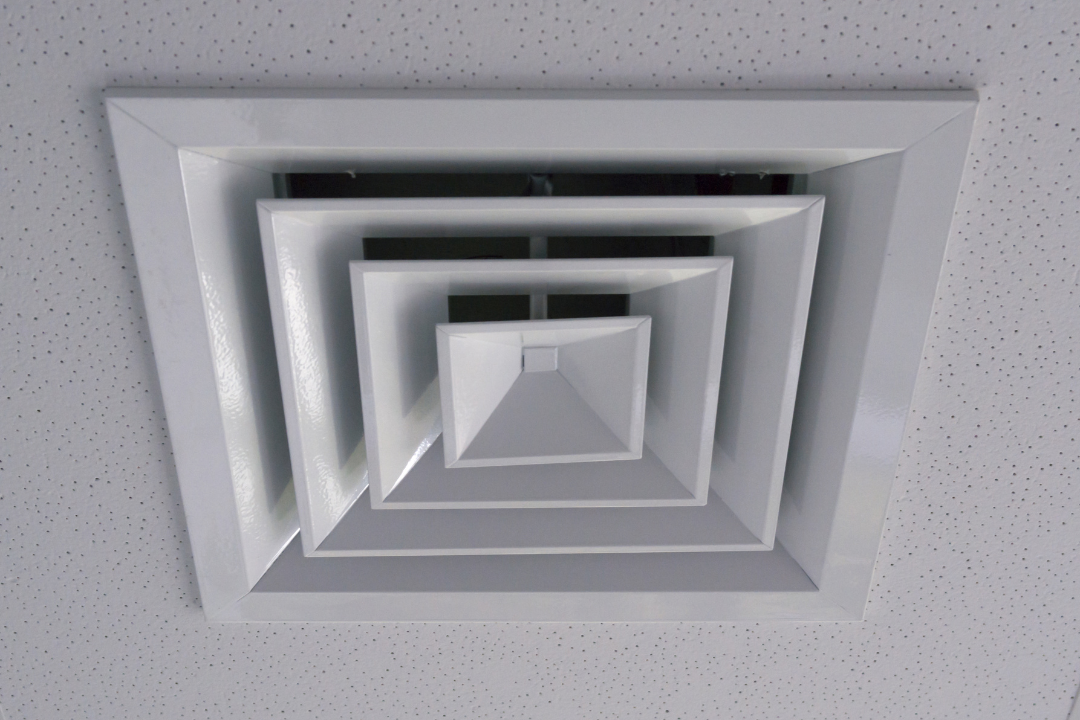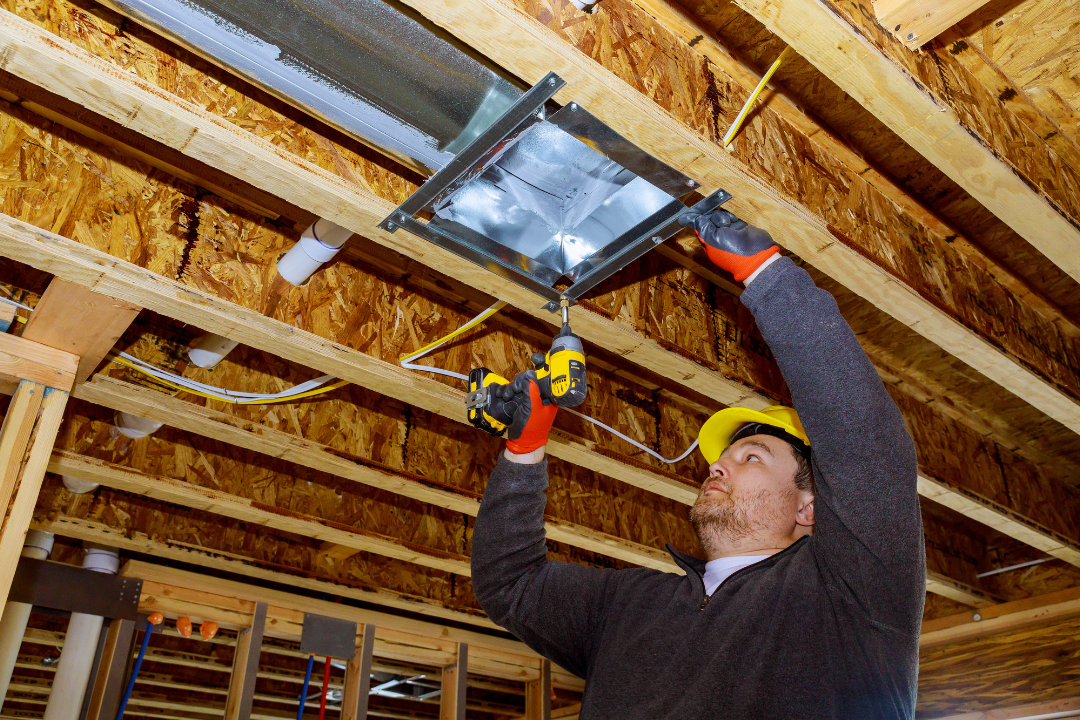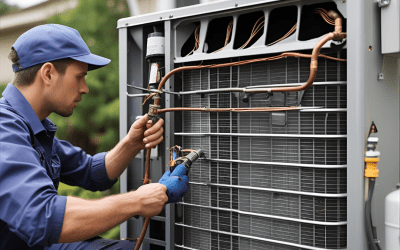An effective ventilation system is designed to provide a continuous supply of fresh air while expelling pollutants and excess moisture. However, when these systems malfunction, they can lead to many problems, including increased indoor pollutants, mold growth, and even structural damage. Common residential ventilation system problems plaguing systems include blockages, mechanical failures, and improper installation.
A study by the Lawrence Berkeley National Laboratory found that about 50% of the homes surveyed had ventilation systems that failed to meet the minimum ventilation standards due to poor installation and maintenance practices.
This statistic underscores the need for homeowners and professionals to understand and address the potential malfunctions in residential ventilation systems that can arise. Understanding these issues is crucial for ensuring that residential ventilation systems perform optimally, safeguarding the health of the occupants. In this blog, we will discuss the major malfunctions that can plague residential ventilation systems and tips to overcome these issues. Read on to learn more!
Major Malfunctions in Residential Ventilation Systems
Blocked or Clogged Ducts
A study by the National Air Duct Cleaners Association (NADCA) found that the average home collects 40 pounds of dust annually, contributing to duct blockages.
Ventilation ducts form a closed network and hence are susceptible to accumulation of dust, dirt, insects, and other contaminants over time. These elements tend to block your air ducts, which results in reduced airflow and an ever-soaring energy bill as your system has to work twice as much as it would normally.
Improper Installation
A major reason behind the premature malfunctioning of any ventilation system is accounted to be installation error. If your HVAC system installer didn’t install high-quality ducts with proper sizing and sealing, it could lead to functional disability. The most common residential ventilation system problems are poor air distribution and increased noise.
Mechanical Failures
HVAC systems, including ventilation components, typically require considerable repairs or replacement every 10-15 years. If not done properly and on time, these could result in major wear and tear on system components such as fans, motors, and controls that could completely break down the system or cause it to overheat.
Inadequate Ventilation Rates
A minimum ventilation rate of 0.35 air changes per hour is recommended. However, many residential systems fail to meet this standard due to a lack of careful HVAC system design. When the ventilation system is not designed to handle the specific needs of a household or when the number of occupants increases without corresponding adjustments to the ventilation system, it can lead to poor indoor air quality. This fault results in increased humidity and higher levels of indoor pollutants, making the environment uncomfortable and potentially harmful to health.
Moisture and Condensation Issues
Another common residential ventilation system problem is moisture and condensation issues within ventilation systems are typically caused by leaky ducts, poor insulation, and unbalanced airflows that lead to condensation forming inside the ducts. These conditions create a fertile environment for mold growth, which can cause significant structural damage and health risks due to the increased presence of mold spores.
Leaky Ductwork
Over time it is natural that your ventilation system would have encountered physical damage, poor sealing, and age-related degradation of duct materials. Such leaks lead to the loss of conditioned air, reducing system efficiency.
The U.S. Department of Energy reports that leaky ducts can reduce heating and cooling efficiency by up to 20%.
Addressing duct leakage through proper sealing and regular maintenance is hence paramount.
Inadequate Maintenance
Are you getting your residential ventilation systems inspected at least once every year? Well, if not, then you are possibly at risk of encountering a huge repair and maintenance bill. How? Refraining from regular inspections, cleaning, and component replacements allows dirt and damage to pile up. These neglect minor repairs with time escalate and turn into major, costly repairs. In order to avoid such situations, the HVAC Inspection, Maintenance, and Restoration Association (NADCA) recommends inspection and maintenance atleast once every year.
Preventive Measures and Tips for Maintenance
Regular Inspection and Cleaning Of Ventilation Ducts
The primary measure you need to take in order to avoid any costly repair is timely inspection, cleaning, and repair of your ducts. This includes examining ducts, vents, and filters (every 1 to 3 months) for any signs of wear or blockage. This not only improves the performance by unobstructing airflow but also extends the lifespan.
Seal and Insulate Ducts
Properly sealing and insulating ducts is essential to prevent air leaks and maintain energy efficiency in residential ventilation systems. Using mastic sealant or metal tape to seal duct joints and connections, along with insulating ducts in unconditioned spaces like attics and crawl spaces, is recommended. This prevents energy wastage, so you will get better ventilation.
Use High-Efficiency Air Filters
Ask your HVAC repair professional to replace all ordinary air filters with high-efficiency particulate air (HEPA) filters. These filters can remove up to 99.97% of airborne particles, improving indoor air quality. This preventive measure is particularly beneficial for households with individuals suffering from allergies or respiratory conditions.
Regular Maintenance of Fans and Motors
Conducting regular maintenance of fans and motors is necessary to ensure they operate efficiently. This includes lubricating moving parts, tightening loose components, and replacing worn-out parts to prevent mechanical failures.
Ensure Proper Ventilation of High-Moisture Areas
Installing exhaust fans in high-moisture areas such as bathrooms and kitchens is essential for removing excess humidity and pollutants. According to the Building Performance Institute (BPI), effective ventilation in these areas can reduce the risk of mold and mildew by up to 50%. Moreover, regularly cleaning exhaust fans and checking their operation ensures that they effectively remove moisture and odors.
Keep Vents and Returns Unobstructed
Another major thing to look out for is that none of your furniture, curtains, and other objects block vents. Unobstructed vents help maintain proper airflow throughout the home. This simple yet effective measure ensures that the ventilation system operates as intended, providing a comfortable and healthy indoor environment.
Conclusion
Ensuring the optimal functioning of residential ventilation systems is crucial for maintaining indoor air quality and energy efficiency. For professional HVAC and AC repair in New Braunfels, trust the experienced name, Classic Air Conditioning & Heating! Give us a call at (830) 358-1499 to schedule an appointment today!







